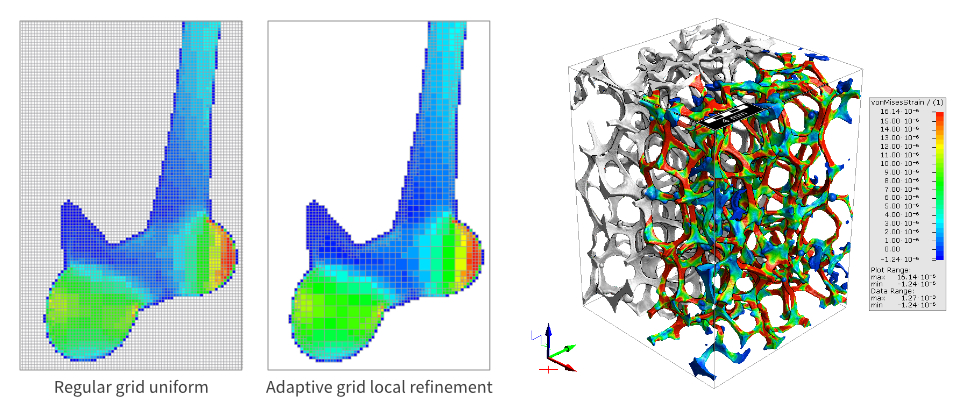Very often, our customers are interested in the mechanical properties of highly porous structures such as nonwovens. From FlowDict, you might already know our LIR-solver. It is valued by our customers for a very memory efficient implementation relying on an adaptive grid with low memory usage, especially for highly porous structures. We use this same advantage now also for computation of the young’s modulus of a structure in ElastoDict. From now on, you can choose the LIR solver in the solver tab of the Effective Stiffness Options.
Comparable to what made the LIR solver great for flow calculation in FlowDict, the big advantage here is the adaptive grid. As depicted in Figure 1, with a regular grid, the grid has to be sufficiently fine to resolve all peaks in strain or stress. Needing a finer grid in some areas means that all areas need to have a finer resolution. With the adaptive grid, it can be refined just where needed. Furthermore, in case of the highly porous structure, the pore space doesn’t need memory or computing efforts. This means in the shown case of a highly porous aluminium foam (Figure 1, right), that 95% of the whole domain can be neglected in computation. As this sample originates from a µCT-scan of an irregular structure, there is no periodicity that can be used in the computation. The LIR technology works just as well for symmetric boundary conditions. This is achieved by imposing the boundary conditions directly in the computational cells at the domain boundary while the method which solves the mechanics equations are kept the same. This makes it easy to implement more boundary conditions and more complex materials laws in future GeoDict versions.
